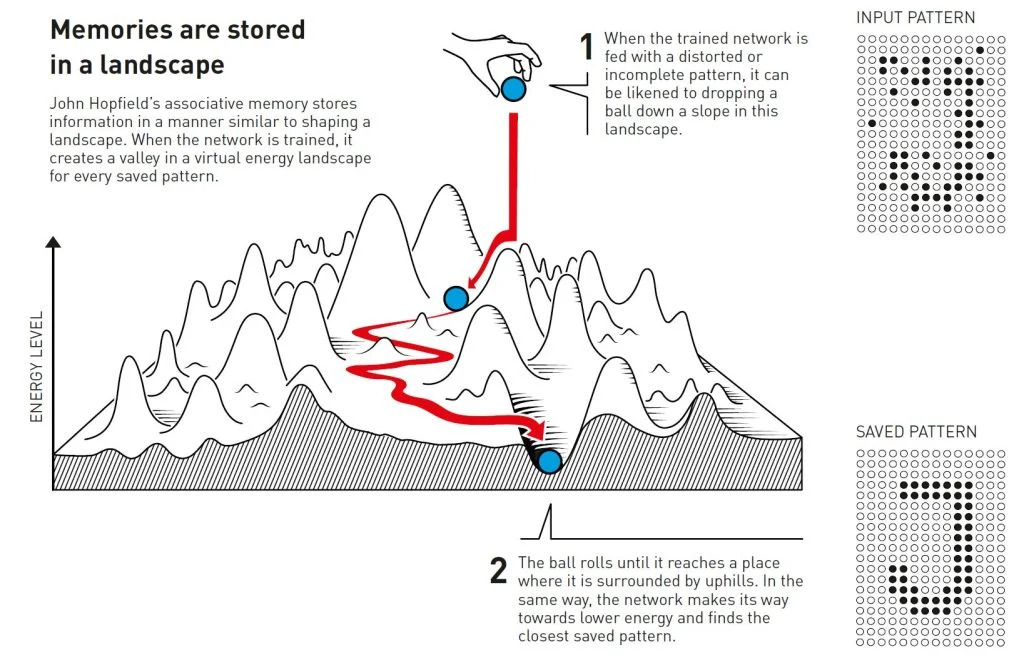According to Nobel Prize founder Alfred Nobel, the award goes to “those who, during the preceding year, shall have conferred the greatest benefit to humankind”
Though Alfred Nobel amassed his fortune through his discoveries of nitroglycerin, dynamite, and blasting powder—earning him the moniker “merchant of death”—he loathed his association with war. In his last will, he funneled his wealth into the establishment of the Nobel Prize to honor “those who, during the preceding year, shall have conferred the greatest benefit to humankind.”
From uncovering protein structures to explaining the vast differences in prosperity between nations, the latest Nobel Prize winners have helped humanity take a step forward.
READ: When rest becomes a chore: A twentysomething woman’s burned-out diary
Nobel Prize in Physics
John J. Hopfield of Princeton University and Geoffrey E. Hinton of the University of Toronto won the Nobel Prize in Physics “for foundational discoveries and inventions that enable machine learning with artificial neural networks.”
Hopfield sought to mimic the brain’s neural network, more specifically the phenomenon of associative memory where, to remember a particular object, the brain goes through several memories it associates the object with.
In its practical use, the Hopfield Network, when fed an incomplete pattern (fragmented memory) uses an artificial neural network to find the original stored pattern (complete memory).

Hinton, on the other hand, used Hopfield’s work as the foundation for the Boltzmann machine. This, like the Hopfield network, can identify information it is fed and associates/remembers it from an original it was given. However, the Boltzmann machine doesn’t stop there and uses its artificial neural network to both classify and create new examples of the image it was trained with.
Nobel Prize in Chemistry
The Nobel Prize in Chemistry was awarded to David Baker of the University of Washington, and Demis Hassabis and John M. Jumper from Google DeepMind.
Baker discovered a method to synthesize artificial proteins. Proteins generally consist of 20 different amino acids. Baker’s research allowed him to use the amino acids to design proteins with different uses, including ones with potential applications in pharmaceuticals, vaccines, and more.
Hassabis and Jumper developed an AI model called AlphaFold2, which analyzes amino acid sequences to identify all 200 million proteins known to science. AlphaFold2 can be used for a variety of purposes, from understanding antibiotic resistance to synthesizing enzymes that can decompose plastic.
Nobel Prize in Physiology or Medicine
This year’s Nobel Prize in Physiology or Medicine was given to Victor Ambros and Gary Ruvkun for “the discovery of microRNA and its role in post-transcriptional gene regulation.”
Our chromosomes are like instruction manuals for the cells. But when every cell contains the same chromosomes, how are there different types of cells in the body (blood, muscle, nerve, etc.)?
Gene regulation ensures our cells select only the relevant instructions for their cell type.
Ambros and Ruvkun discovered that microRNA, a new class of tiny RNA molecules, plays a crucial role in gene regulation. Deficiencies in this process often lead to the development of diseases such as cancer and diabetes. This makes their discovery not only important in better understanding human physiology but also inherent to possibly helping advance medical science.
Nobel Prize in Literature
The Nobel Prize in Literature was awarded to South Korean author Han Kang “for her intense poetic prose that confronts historical traumas and exposes the fragility of human life.”
According to chair of the Nobel Committee Anders Olsson, “In her oeuvre, Han Kang confronts historical traumas and invisible sets of rules and, in each of her works, exposes the fragility of human life. She has a unique awareness of the connections between body and soul, the living and the dead, and in her poetic and experimental style has become an innovator in contemporary prose.”
Nobel Peace Prize
This year’s Nobel Peace Prize was given to the Japanese organization Nihon Hidankyo, which consists of atomic bomb survivors from Hiroshima and Nagasaki. The Hibakusha (a name assigned to these survivors) have since worked to raise awareness of the inherent dangers of nuclear weapons—using their own experiences as matter-of-fact testimonies.
According to the Norwegian Nobel Committee, “The Hibakusha help us to describe the indescribable, to think the unthinkable, and to somehow grasp the incomprehensible pain and suffering caused by nuclear weapons.”
Sveriges Riksbank Prize in Economic Sciences in Memory of Alfred Nobel
The Royal Swedish Academy of Sciences awarded the Sveriges Riksbank Prize in Economic Sciences in Memory of Alfred Nobel to Daron Acemoglu and Simon Johnson of the Massachusetts Institute of Technology and James A. Robinson of the University of Chicago.
The Nobel Prize laureates discovered that differences in prosperity across countries are affected by the societal institutions introduced during colonization. Inclusive institutions were identified to lead to a prosperous population while extractive institutions only benefited those in power.
The research also identified the correlation as a cause of democratization: “When there is a threat of revolution, the people in power face a dilemma. They would prefer to remain in power and try to placate the masses by promising economic reforms, but the population are unlikely to believe that they will not return to the old system as soon as the situation settles down. In the end, the only option may be to transfer power and establish democracy,” shares the Nobel Committee.